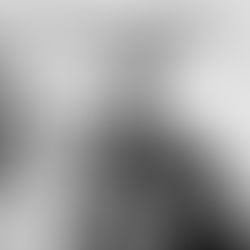Rainer Maria Rilke : Dwelling in Poetry
- InLibroVeritas

- 12 nov. 2020
- 5 min de lecture
Dernière mise à jour : 29 déc. 2023

Rainer Maria Rilke at Muzot, 1923
Extract from :
Scott Marentette
The Language of Real Life : Self-Possession in the Poetry of
Paul Celan, T. S. Eliot, R.M.Rilke, and Paul Valéry
"(...) High upon a mountain terrace in the Upper Rhône Valley, the Château de Muzot sits snugly in the surrounding trees girding the property with their roots. Built in the thirteenth century, the château still housed furnishings from the seventeenth century when Rainer Maria Rilke moved into it in 1921. In July of that year, he discovered the château in the town of Sierre while trekking across the Swiss region of Valais in search of a suitable dwelling in which to undertake his next creative venture.
He moved into the château in November in order to begin the most ambitious creative phase of his life. Having gradually loosened the ties of family, friends, and finances, Rilke sought in the remote château the calm and solitude that he needed in order to mobilize all of his energies towards writing.

By January 1922, Rilke would quickly become inspired to write the culminating works of his career, the Duino Elegies and The Sonnets to Orpheus. By going to the château, Rilke performed the decisive task of setting apart his own space for creating. Much like the studio of visual artists such as his mentor, sculptor Auguste Rodin, Rilke’s retreat functioned as a specially designated space in which he could fully devote himself to his art. The trajectory of Rilke’s career is precisely the task of seeking out the space for living the way of the artist.
Just as the artist needs a space in which to work, the artist also opens a space with the work of art. Earlier in his career, Rilke had written a poem entitled “Eingang” (“Entrance”) in which he invites the reader to step out of a room in a house, cross the threshold to the outside, and imagine planting a tree in the air.
Whoever you are: in the evening step out
of your room, where you know everything....
With your eyes, which in their weariness
barely free themselves from the worn-out threshold,
you very slowly lift one black tree
and place it against the sky: slender, alone.
And you have made the world.
The poem is fittingly placed at the beginning of his collection The Book of Images, which invites the reader to enter the space of poetry. As he grafts branches from Charles Baudelaire’s “forêts de symboles” (“forests of symbols”), Rilke establishes for poetry a privileged space apart from the cares of the quotidian. Yet what constitutes the world of verse ? Is the tree that Rilke asks the reader to imagine merely growing in the imagination or does it correspond to concrete reality ?
Likening the tree to “a word which grows ripe in silence”, Rilke’s invitation is a call to enter the realm of poetry – the space that seems to exist apart from the material world. As Rilke’s retreat to Muzot indicates, entering the space of poetry requires an appropriate place for dwelling in it. Muzot was the refuge where he could foster his creativity in an unfettered state of self-possession.
Defined commonly as “equanimity” or “self-composure,” self-possession is the optimal condition for inhabiting the space of creativity. In other words, Rilke’s retreat points to the relationship between place and self-possession. As maps draw the lines of geographical borders, poetry delineates the boundaries of Being.
(...)
In 1905, Rilke worked as Rodin’s secretary for nearly a year. In exchange for taking care of the sculptor’s correspondence, Rilke received free room and board, unfettered access to his mentor, as well as afternoons to write poetry at leisure. What struck Rilke in particular as an aesthetic problem was the intangible aspect of words. While walking around Rodin’s sculptures, he could not help but feel the necessity of making words as solid as stone.
Eventually, he would keep working away at a solution and carve sculptures out of air with the genre of the “Ding-Gedichte” (“Thing-poems”), which were popular in the early 1900s. Although he moved beyond the form of the thing-poem, Rilke would not lose his commitment to sculpting language in a concrete manner. What he had learned from his
mentor, he was now able to incorporate into his own verse. His learning from Rodin
amounted to a form of aesthetic and existential appropriation:
“What troubled him was precisely the appearance of that which he considered indispensable, necessary, and good : the appearance of beauty. He wanted it to be.”
(Andreas-Salomé/Rilke)
As part of his apprenticeship under Rodin, Rilke’s more mature work is the reckoning with the concrete aspects of language in its most apparently intangible qualities. Supported throughout his career by another mentor, Lou Andreas-Salomé, Rilke eventually succeeded in achieving in his own voice what she had described in a letter from November 6, 1910 the “Zauber” (“magic”) of lyric poetry.
The magic that Rilke performs in his later poetry, as it relates to possessing Being, is understood according to the way in which he invests himself in words and events. In the process of naming, Rilke fills his words with the fullness of ways of being.

Rainer Maria Rilke ; Muzot, 1924
However, he also performs the opposite manoeuvre, the reveal of his magical literary feats. While he does in fact invest himself in his words and actions, he also suspends his investment. Rather than describing existence in terms of closed, fixed values, Rilke describes an openness that corresponds to Heidegger’s understanding of Being as moving in time.
Rilke develops his existential economy out of his recognition of mortality. Death, the ultimate form of negation, represents a force of renewal in which no existential value is permanent and potential can be renewed infinitely:
“Be – and at the same time know the implication of non-being,
the endless ground of your inner vibration.”
(Elegies/Sonnets 163)
As part of his thinking about the relationship between temporality and value, Rilke acknowledges that preserving the past requires active effort. By referring back to the archetypal poet Orpheus, Rilke develops a mode of transformation that keeps alive in new forms past ways of being. Since it is dependent upon capturing the sense of Being, Orphic transformation requires a kind of vision that relies not so much upon the intellect as on the heart:
“Love, the World exists nowhere but within.
Our life is lived in transformation.”
In the trajectory of Rilke’s career, the shift in his vision from eye to heart represents a turn in his poetic development towards singing “Einklänge ins Allgemeine” (“in harmony with the prevailing voice”). As an image from one of the “Five Hymns” that he wrote while overtaken by the historical rift opened with World War I, “harmony with the prevailing voice” represents the collective will of a people unfettered by the manipulations of Europe’s rulers at the time.
Although he was quickly disabused of his philosophical nationalism, Rilke nevertheless held out for a special terrain devoted to the free traffic of Being. In the Duino Elegies, he distinguishes between the boundaries of poetic dwelling and the marketplace with a sarcastic description of urban life:
"For adults only
there’s something special to see: coins copulating,
not just acting, but actually, their gold genitals,
everything, the whole operation – educational and guaranteed
to arouse you."
The crass reality of the market is that money is copulating in a beastly spectacle. The distinction between the home and the market represents the recognition that ever-increasingly in the modern period, the most intimate spheres of existence have been further
annexed to the marketplace. Rilke, as the poet who fights to protect the reserve of Being, more directly points to the home as a fundamental trope that serves as a kind of refuge from the market. Having seen two choices, Rilke opted for an uncompromising dwelling in poetry.
(...)"
* * *
Source:

















